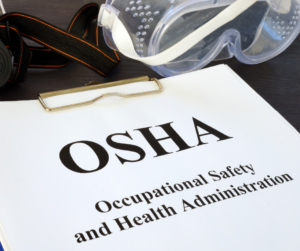 Oilfield Contractor Cited With $196,886 in Penalties Following Deadly Explosion
Oilfield Contractor Cited With $196,886 in Penalties Following Deadly Explosion
Violations of workplace health and safety standards and subsequent OSHA citations can impact organizations of all sizes and sectors. In addition to highlighting unaddressed safety hazards, these citations often carry a number of consequences, including costly penalties, diminished workforce morale and widespread reputational damage. With this in mind, it’s vital for organizations to prioritize workplace safety and OSHA compliance to better protect their employees and mitigate the risk of potential citations and related violations. An effective way to do so is by analyzing past OSHA citations issued to other organizations and identifying key takeaways to prevent similar incidents. This case study outlines a recent OSHA citation and explains what the affected organization could have done to avoid it.
What Happened?
In February 2023, OSHA cited an oilfield contractor with $196,886 in penalties to address safety violations that resulted in an explosion that sent seven of the company’s employees to local hospitals, including a welder who died from his injuries six days later. The explosion—which took place in July 2022 in Flora, Mississippi—occurred during welding operations after metal tanks were replaced with fiberglass ones at a saltwater disposal site for oil and gas fields. OSHA found that the oilfield contractor willfully failed to fill the saltwater disposal tank with water and failed to thoroughly clean, ventilate and test the tank for flammable substances. In addition, OSHA cited the company with failure to instruct workers on proper ways to work with equipment containing flammable substances, failure to make medical attention available to workers exposed to explosion hazards and failure to remove or protect fire hazards near welding operations.
What Could Have Been Done?
To prevent its latest OSHA citations, the oilfield contractor could have taken various precautions, including:
- Training employees on hazard recognition—Employers should instruct each employee on how to recognize and avoid unsafe conditions. Employees should also be trained on the regulations applicable to their work environments and how to eliminate any hazards or exposures to illness or injuries. In the case of the oilfield contractor incident, employees should have been informed about the avoidance of unsafe conditions and the regulations applicable to working around and with equipment containing flammable substances.
- Providing prompt medical attention—Employers should make provisions for prompt medical attention prior to the start of a project in case of a serious injury. The oilfield contractor should have made sure there were individuals certified in first-aid training to provide first-aid treatment in the event of an emergency since the closest clinic, hospital or physician was more than 10 minutes away.
- Practicing proper fire hazard prevention—When practicable and before hot work starts, employees must move objects to be welded, cut or heated to a safe place to prevent fire hazards. If objects are unable to be moved, all fire hazards in the vicinity should be taken to a safe place or otherwise protected. Employees should not complete hot work in areas where there is a presence of flammable paints, other flammable compounds or heavy dust concentrations that can create a fire hazard. Furthermore, drum containers or hollow structures that previously contained toxic or flammable substances must be filled with water or thoroughly cleaned, ventilated and then tested prior to welding, cutting or heating operations taking place.
- Using fall protection—Employers should make sure their employees are using the proper fall protection when working in an aerial lift. Fall protection should be used when working at heights of 6 feet or higher in construction. Employees should wear a body belt with a lanyard attached to the boom or basket when in an aerial lift. Although body belts are not acceptable as part of personal fall arrest systems, they are acceptable in a tethering system or in a restraint system under 1926.502(e).
Contact us today for additional OSHA updates and workplace safety resources.
© Zywave, Inc. All rights reserved.





Blog